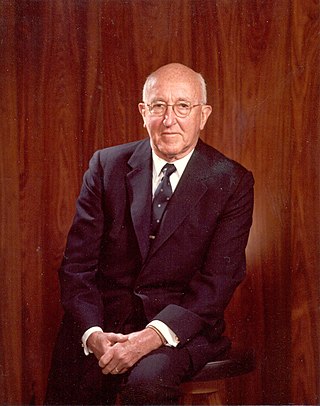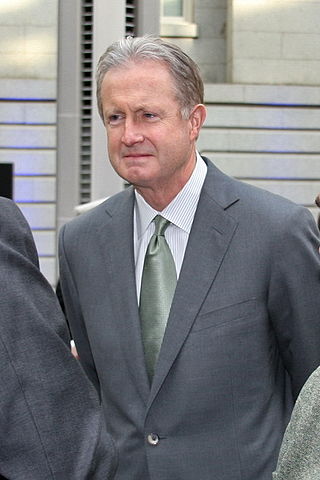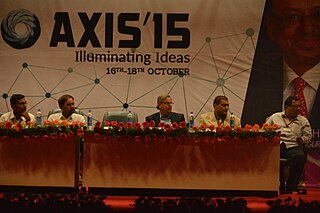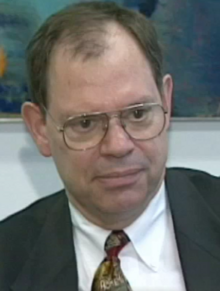Harry Curtis Stonecipher is an American business executive who was president and chief executive officer of American aerospace companies: Sundstrand, McDonnell Douglas, and The Boeing Company. Stonecipher was widely credited with the seeming resurgence of Boeing after government procurement scandals. However, his tenure also included major decisions to change Boeing's design and sourcing process for the new 787 airliner. These decisions later proved to be organizationally and financially disastrous for the company. Stonecipher was forced to resign from Boeing following the disclosure of an affair with a subordinate, in violation of the Boeing Code of Conduct.

Boeing Commercial Airplanes (BCA) is a division of The Boeing Company. It designs, assembles, markets, and sells jet airliners and business jets, and also provides product-related maintenance and training to customers worldwide. BCA operates out of its division headquarters in Renton, Washington, and has more than a dozen engineering, manufacturing, and assembly facilities located throughout the United States and internationally. It includes the assets of the Douglas Aircraft division of the former McDonnell Douglas Corporation, which merged with Boeing in 1997. As of the end of 2021, BCA employed about 35,926 people.

William McPherson Allen was an American businessman in the aviation industry who served as the President of Boeing from 1945 to 1968.
Philip Gustav Johnson was a pioneer in the manufacturing of airplanes and in the creation and operation of commercial airlines in the United States and Canada. With backgrounds as an engineer and businessman, Johnson served as president of Boeing, United Airlines and Kenworth.
Thornton "T" Arnold Wilson was the Chairman of the Board and chief executive officer of Boeing corporation.

The Institut Supérieur de l'Aéronautique et de l'Espace is a French grande école of engineering, founded in 1909. It is the world's first dedicated institute of aerospace engineering. ISAE-SUPAERO is part of University of Toulouse, ISSAT, PEGASUS, GEA, Toulouse Tech, CESAER and Aerospace Valley. The institute is ranked highly among Europe's engineering schools.
Michael M. Sears is an American former Boeing executive and convicted felon.

Alan Roger Mulally is an American aerospace engineer and manufacturing executive. He served as the CEO of Boeing Commercial Airplanes from 1998 to 2006, and later as president and chief executive officer of the Ford Motor Company from 2006 to 2014.

James F. Albaugh is the former executive vice president of The Boeing Company and chief executive officer of the Boeing Commercial Airplanes business unit. He served in these capacities for Boeing Commercial Airplanes from September 1, 2009, until his retirement on June 26, 2012. He retired from the company on October 1, 2012. He previously served as president and chief executive officer of the Boeing Defense, Space & Security business unit. Albaugh oversaw a $30.8 billion budget while managing over 70,000 personnel in that position. Albaugh earned $1,499,923 in 2005, making him one of the highest-paid managers in the defense sector.

Joseph Frederick Sutter was an American engineer for the Boeing Airplane Company and manager of the design team for the Boeing 747 under Malcolm T. Stamper, the head of the 747 project. Air & Space/Smithsonian magazine has described Sutter as the "father of the 747".
Jan Roskam was a Dutch-born American aircraft designer. He was the Deane E. Ackers Distinguished Professor of Aerospace Engineering at the University of Kansas. He was also the author of eleven books on airplane design and flight dynamics and over 160 papers on the topics of aircraft aerodynamics, performance, design and flight controls. He founded the company DARcorporation with Willem Anemaat.

Dinesh Keskar is senior vice president of sales in Asia-Pacific and India at Boeing Commercial Airplanes.

Vivek Lall is an American scientist who has been Chief Executive of General Atomics Global Corporation since June 1, 2020. Before joining General Atomics, Dr Lall worked at Lockheed Martin, and held key positions with Boeing and Lockheed Martin. Lall previously worked at General Atomics from August 2014 to December 2017. He has also worked with Raytheon. Lall was heading the Boeing operations in India from 2007 through April 2011. Lall previously worked for the US-based global defense and nuclear giant General Atomics as the global Chief Executive for International Commercial Strategic Development for General Atomics.

Roger A. Krone is the president and chief executive officer of the Boy Scouts of America. He was previously CEO of Leidos. An aerospace engineer, Krone worked for 45 years in the aerospace industry, holding senior program management and finance positions at Boeing, McDonnell Douglas, and General Dynamics.
Raymond L. Conner is a retired American businessman formerly serving as vice chairman of The Boeing Company and president and chief executive officer of Boeing Commercial Airplanes.
John J. Tracy is the retired Chief Technology Officer (CTO) of The Boeing Company, the world's largest aerospace company. At Boeing, he held the dual roles of CTO and Senior Vice President of Engineering, Operations & Technology from June 2006 to mid 2016.

Tory Bruno is an American aerospace engineer and executive. He has been the CEO of United Launch Alliance (ULA) since August 2014. Before ULA, he worked at Lockheed Martin, where he made the transition from engineer to executive.
Walt W. Braithwaite is a Jamaican-born American engineer and former executive at Boeing. He played an integral role in the introduction and use of CAD/CAM and IGES technology at Boeing and in 2000 was named as Boeing's President of Boeing Africa. He has received the Black Engineer of the Year and Pathfinder Awards and the Walt E. Braithwaite Legacy Award is named in his honor.

Patrick “Pat” Michael Shanahan is the president and chief executive officer of Spirit AeroSystems. He is a former United States federal government official who served as the acting United States Secretary of Defense in 2019. President Donald Trump appointed Shanahan to the role after the resignation of Jim Mattis. Prior to that, Shanahan served as Deputy Secretary of Defense from 2017 to 2019. Before his government service, he previously spent 30 years at Boeing in a variety of roles.

This is the history of American aerospace manufacturing company Boeing.













